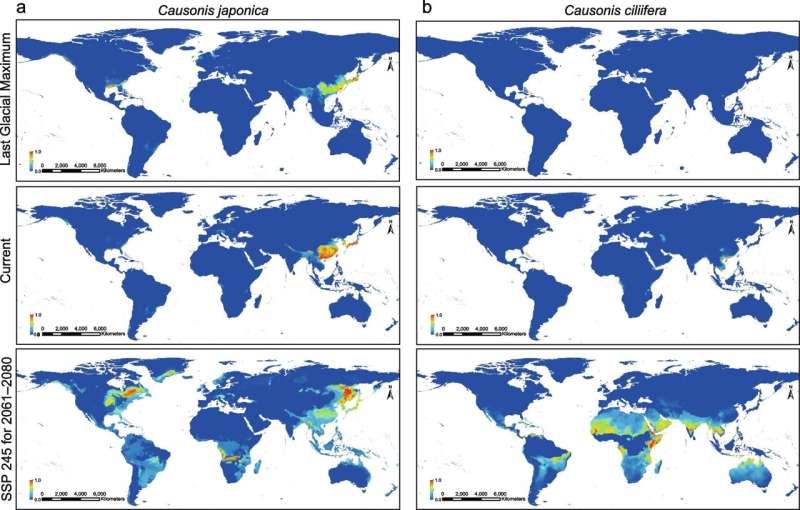This article has been reviewed according to Science X's editorial process and policies. Editors have highlighted the following attributes while ensuring the content's credibility:
fact-checked
peer-reviewed publication
trusted source
proofread
Study suggests potential role of hybridization and polyploidization in species range expansion

In a study published in BMC Biology, Prof. Chen Zhiduan's team at the Institute of Botany of the Chinese Academy of Sciences (CAS), together with their international collaborators, used densely sampled nuclear and plastid data to reconstruct a reliable reticulate evolutionary history of Causonis in a robust biogeographic framework.
They detected nuclear gene tree conflicts throughout the genus, especially in the core Causonis clade, which were identified as mainly caused by extensive hybridization events. Using comprehensive methods, they also revealed an allopolyploid origin of the widespread core Causonis clade, which may have promoted the accumulation of stress-related genes and thus facilitated the adaptation to changing environments.
Elucidating the mechanisms promoting species distribution range is crucial for understanding the dynamics of biodiversity under climate change. Hybridization and polyploidization, two processes thought to accelerate the generation of adaptive innovations, have been proposed to play important roles in facilitating the expansion of species range distribution.
The genus Causonis of the grape family provides an opportunity to explore the mechanisms underlying the contrasting patterns of species distribution ranges. Species of Causonis show wide variation in distribution ranges, with most species in the "core clade" possessing much larger ranges than those in the early diverging lineages.
Previous studies have also suggested potential hybridization and polyploidization in Causonis, particularly in the core Causonis clade with more widespread species. Investigating the role of hybridization and polyploidization in species distributions requires strategies that bridge genomics and biogeography.
In this study, the researchers illustrated how hybridization and polyploidization may have contributed to the excessive disparity in species distribution ranges of Causonis. During the early Oligocene glaciation, most Causonis lineages underwent extensive extinction and distribution range contraction, while the core Causonis ancestor, equipped with duplicated genomes, may have survived the glaciation and flourished in continental Asia.
Using species distribution models, the researchers showed that the wide- and narrow-ranged species may have had different biogeographic pasts and may face different conservation challenges under future climate change. For example, the widespread species C. japonica tends to be more invasive in the future, while the narrow-ranged species C. ciliifera may be at risk of extinction due to the shrinking of adjacent suitable habitats.
This finding suggests the importance of considering the specific evolutionary history and genetic properties of the focal species when developing conservation strategies.
More information: Jinren Yu et al, Distinct hybridization modes in wide- and narrow-ranged lineages of Causonis (Vitaceae), BMC Biology (2023). DOI: 10.1186/s12915-023-01718-8
Journal information: BMC Biology
Provided by Chinese Academy of Sciences




















